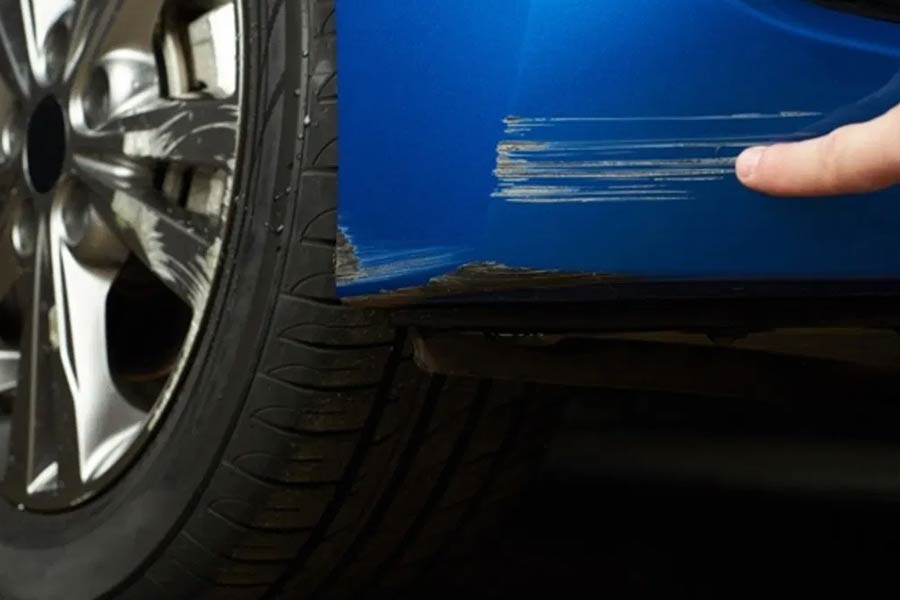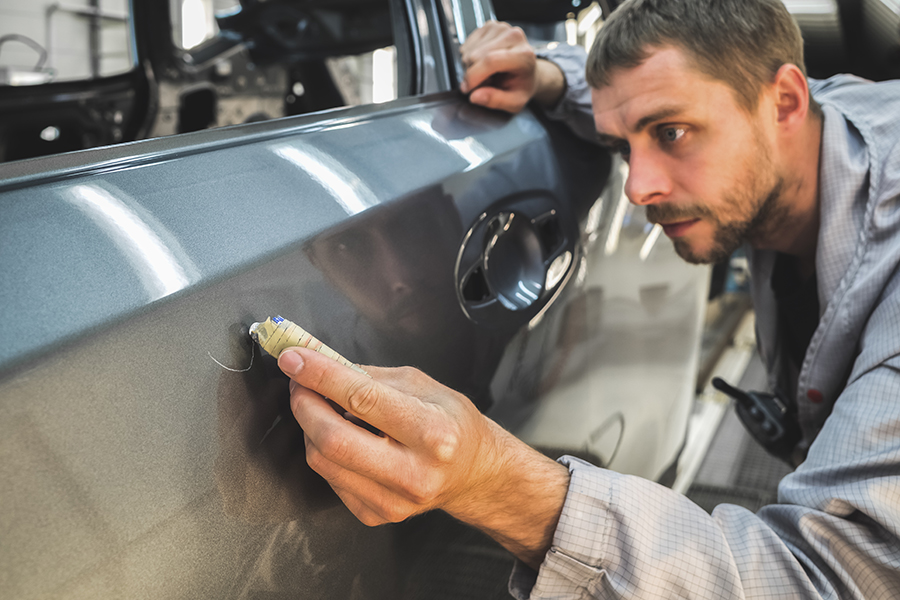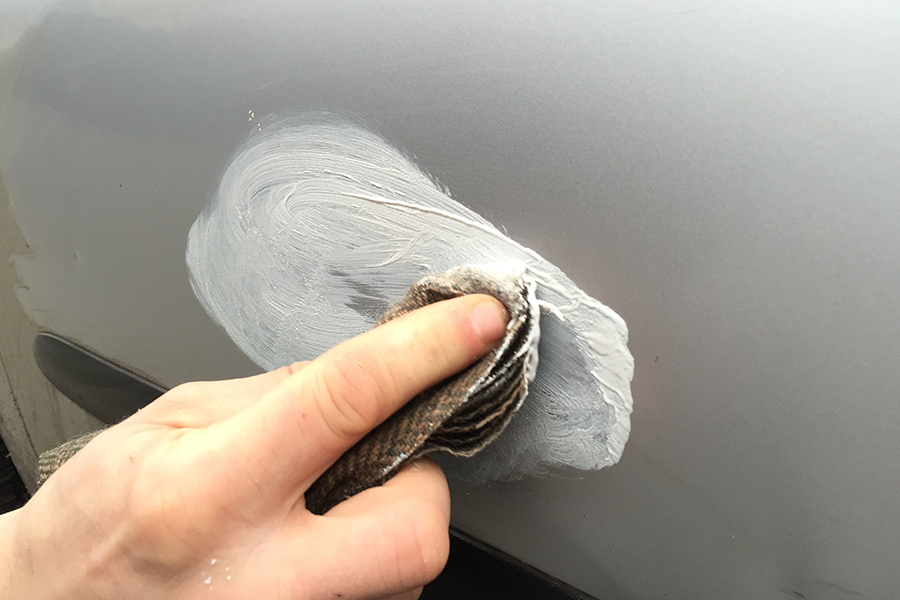Car scratch removal has evolved from a tedious task requiring professional help to something car owners can now tackle with confidence, thanks to advancements in automotive care technology. This guide sheds light on the most effective methods and products that promise to make your car look as good as new without breaking the bank. Whether it's a minor scuff or a deep scratch, understanding the right approach to fixing it can save you time and money, ensuring your vehicle maintains its value and appearance.
Key Takeaways
- Car scratch removal can be tackled both DIY or by professionals, depending on the scratch's depth and severity.
- Before attempting to remove a scratch, it's crucial to clean the area thoroughly to avoid further damage.
- Simple scratches can often be fixed at home using basic techniques and products like toothpaste or scratch removal kits.
- For deeper scratches, seeking professional services ensures the best results, preventing rust and maintaining your car's value.
- After repairing scratches, regular maintenance, including waxing and polishing, can protect the paint and prevent new scratches.
- Always assess the scratch carefully to choose the most effective and least invasive method of removal.
Understanding Car Scratch Removal
Types of Scratches
Scratches on cars can vary. Clear coat scratches are on the surface and easiest to fix. Paint layer scratches go deeper and need more work. The deepest are primer scratches, which often require professional repair. The depth of a scratch decides how we fix it.
Swirl marks differ from actual scratches. They usually come from washing or drying cars with rough materials.
Assessing the Damage
To see how deep a scratch is, use sunlight or a flashlight. This helps understand the scratch's depth better. If the scratch looks deep, especially down to the primer, it's best to seek professional help.
For minor damage, check if the scratch affects only the clear coat. Light scratches that don't reach the paint can be easier to deal with at home.
Tools Needed
Fixing car scratches requires some tools. You'll need sandpaper, rubbing compound, and a microfiber cloth for basic repairs. For deeper scratches, a dual-action polisher becomes necessary.
It's also crucial to use clean, lint-free towels during the process to avoid adding more scratches.
Preparing for Scratch Removal
Cleaning the Area
Before tackling any scratch, cleaning the area is crucial. Dirt and debris can cause more damage if not removed. Use soap and water to wash the area gently. For tougher grime, a clay bar works wonders on embedded surface contaminants. After cleaning, drying thoroughly is essential to prevent water spots from forming. This step ensures a clean slate for effective scratch removal.
Matching the Paint
Finding your vehicle's paint code is the next step. It's usually in the owner's manual or on a sticker inside the door jamb. Using OEM (Original Equipment Manufacturer) paint guarantees the best match to your car's color. Beware of using mismatched paint; it can worsen the appearance of your car by standing out against the original color.
Gathering Supplies
Now it's time to compile your supplies:
- Paint that matches your car’s color
- Primer and clear coat
- Applicators like brushes or sponges
Set up a workspace that is clean and dust-free to avoid contaminating your work. Remember, proper ventilation is critical when working with volatile substances like paint and primer.
DIY Scratch Removal Techniques
Microfiber Application
To apply scratch removal products correctly, use a microfiber cloth. This ensures the product spreads evenly. Move the cloth in gentle, circular motions. This method helps avoid adding more scratches. Always use separate cloths for applying the product and buffing it off. This prevents dirt from one cloth scratching the car's surface.
Scratch Repair Kits
When choosing between DIY kits and professional-grade products, consider your needs. DIY kits are good for light scratches. They often include abrasives, fillers, and sealants. Look for these components when buying a kit. However, remember that repair kits might not work on deep scratches. For those, you might need professional help.
Paint Touch-Up Basics
Applying touch-up paint requires patience. Put on thin layers of paint to cover the scratch. Let each layer dry completely before adding another one. This could take several hours or overnight. Finish with a clear coat to protect the paint and make it shine.
Professional Scratch Removal Services
Choosing a Service
When looking for a car repair service, focus on their certifications first. These show they meet specific standards. Next, check online reviews to see what other customers say. Also, ask if they offer warranties on their work.
It's smart to request before-and-after photos of past projects. They give a clear picture of the service's quality. Be cautious of places promising quick fixes at much lower prices. Often, these don't last and can even harm your car more.
Paint Matching Expertise
The right paint match makes all the difference. Professionals use tools like spectrophotometers for this. This tool ensures the new paint perfectly matches your car's existing color.
Professional color matching stands out against DIY attempts. The latter often leads to noticeable differences in shade or finish. Trusting experts with this task ensures seamless repairs that blend in.
Detailing and Finishing
After fixing the scratch, consider getting professional detailing. It helps bring back your car's shine and overall look. Waxing and polishing after scratch removal add extra protection and gloss to the paintwork.
Detailing plays a big role in keeping your car's value high. It shows you've taken good care of it, making it more appealing if you decide to sell later on.
Maintenance After Scratch Repair
Protecting Paint
After removing car scratches, protecting the paint becomes crucial. Experts recommend regular waxing. This creates a protective barrier over the paint. It helps shield it from dirt, debris, and minor abrasions.
For areas prone to high impact, consider using paint protection film. It's especially useful on the front bumper, hood, and side mirrors. These spots often get hit by rocks and road debris.
Parking in shaded areas can also minimize UV damage. The sun's rays can fade and weaken your car's paint over time. So, find a spot away from direct sunlight whenever possible.
Regular Detailing
Maintaining your car's paint health requires consistent detailing. Schedule professional detailing services seasonally. This ensures that your vehicle stays in top condition throughout the year.
Regular detailing prevents the accumulation of contaminants. Dirt, sap, and bird droppings can all lead to scratches if not cleaned off promptly. A clean car is less likely to get scratched because there are fewer abrasive particles on its surface.
Avoiding Future Scratches
Be mindful of where you park to avoid door dings and scratches from other vehicles. Tight parking spots increase the risk of damage.
Opt for hand washing over automatic car washes to reduce swirl marks. Automatic washes can be harsh on your car's finish.
Use soft microfiber towels for cleaning and drying. They are gentle on the paint and minimize abrasion compared to rougher materials.
Closing Thoughts
Car scratch removal doesn't have to be a headache. Whether you choose the DIY route or go professional, understanding the process, preparing properly, and following up with good maintenance can keep your ride looking sharp. It's all about knowing your options and taking action. This guide has armed you with the basics—now it's your turn to bring back that showroom shine to your car. Remember, keeping your car's exterior in top condition not only boosts its appearance but also its value. So, don't wait for those scratches to get worse. Tackle them head-on and keep your car looking its best.
Ready to make those scratches a thing of the past? Dive in, apply what you've learned, and see the difference for yourself. Your car deserves that extra care, and so do you. Let's get those scratches fixed and keep your ride looking flawless!
Frequently Asked Questions
How do I know if a car scratch can be removed?
A scratch that hasn't penetrated the clear coat can typically be removed with polishing or rubbing compounds. If it's deeper, touching the paint or primer, professional repair may be needed.
What should I do before attempting to remove a scratch from my car?
Clean the area thoroughly to remove any dirt and debris. Assess the depth of the scratch to choose the appropriate removal technique.
Can I remove car scratches at home?
Yes, minor scratches that don't go beyond the clear coat can often be treated at home using DIY techniques like scratch removal creams or kits.
When should I consider professional scratch removal services?
If the scratch is deep, affecting the paint layer or primer, it's best to seek professional services to ensure a seamless repair and color match.
What are some effective DIY techniques for removing shallow car scratches?
Applying a rubbing compound followed by polishing can effectively minimize shallow scratches. For very light scratches, toothpaste might work as a temporary solution.
How long does professional car scratch removal take?
The time can vary based on the depth and extent of damage but expect anything from an hour for minor repairs to a full day for more extensive work.
What maintenance is required after repairing a car scratch?
Regular washing and applying a protective wax coating can help maintain the repair and protect your car’s paint from future damage.
















